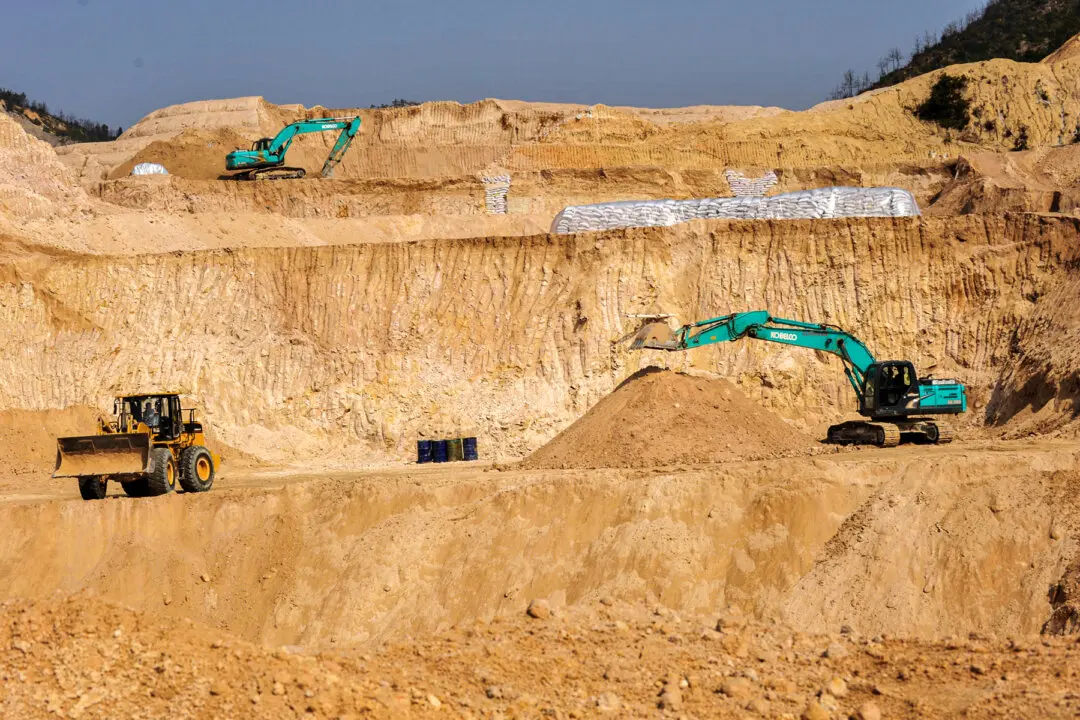Commentary
It’s no secret that the Chinese Communist Party (CCP) wants to invade Taiwan.
The CCP has been trying since it invaded all of China, Tibet, and Xinjiang in 1949 and 1950. Only Taiwan escaped with its freedom, including by democratizing starting in 1987 and partnering closely with other freedom-loving countries—notably the United States and Japan. After the People’s Liberation Army’s attempts to invade Taiwan in the 1950s met with disaster, Beijing planned for another invasion and ways around the expected economic retaliation from the United States and our allies.
To that end, the CCP is now trying to free itself of the U.S. dollar for its international trade, build a world-class navy to protect its international shipping, and secure energy independence by shifting away from oil, gas, and coal imports from places like Russia, Iran, Iraq, Saudi Arabia, Venezuela, Brazil, and Australia. Much of that energy would be vulnerable in the event of a war to not only the freezing of China’s U.S. dollar reserves but to naval blockades and trade embargos.
Beijing seeks to mitigate that risk by shifting to domestic forms of energy such as wind, solar, hydro, nuclear, and hydrocarbon stockpiles. CCP supporters often focus on its renewable energy successes. But these are more a part of China’s energy independence, as indicated by Beijing simultaneously pursuing nuclear plants and growing oil, gas, and coal stockpiles.
The United States and our allies imposed energy embargos on Germany in 1939 and Japan in 1941 as those two countries conquered their neighbors. Both were dependent upon foreign oil, just as China is now. Without China’s renewable energy, a similar oil, gas, and coal blockade would impede the regime’s ability to continue a long war of conquest. Any energy blockade in response could escalate, as it did with Imperial Japan when it responded to the U.S. oil embargo with a surprise attack on Pearl Harbor. In 1940, Germany also sought to secure its energy supplies by sending troops to protect Romania’s oil fields, from which it imported significant fuel oil.
Now, China is trying to achieve energy independence by capturing the South China Sea, which Beijing estimates holds as much as $60 trillion worth of oil and gas. The CCP is also pursuing energy independence with more oil stockpiles, a growing military, and international barter trade—just as Germany started to do in the early 1930s.
Additionally, energy independence in China is being achieved through tens of thousands of dams for hydropower, almost 100,000 wind turbines, hundreds of thousands of acres of solar farms, and 56 nuclear power plants, with another 67 on the way. The dams alone will soon produce enough power for about a third of the country’s electricity needs.
Another part of China’s energy independence is reducing dependence on cars that consume foreign oil. China is achieving this through its electric vehicle (EV) revolution. China is now the global leader in inexpensive EVs and electric battery production. The side effect of its subsidies to this sector is cheap EVs that it exports to the world, flipping China’s oil dependence on the world into global EV dependence on China.
In 2020, the CCP set the country’s goal for reaching peak emissions before 2030, which would give it near peak power, including hydrocarbons, nuclear, and renewables, around a possible Taiwan invasion date of 2027.
As should be clear, Beijing has received international acclaim for its clean energy drive, when that drive is probably more focused on energy independence that will enable a Taiwan invasion. The planned invasion is potentially driving Beijing to support its partner wars abroad, including by Russia and Iran. Those are driving a necessary defense buildup by the United States and our allies. But the side effects of a global arms race and security challenges include more air pollution, including from wars, industrialization, and the cutting of environmental corners to achieve more economic growth.
The CCP has never been known as a huge supporter of environmentalism. Mao Zedong was no President Theodore Roosevelt, who founded the U.S. Forest Service that established 150 national forests in 1906. China’s first national forest was established in 1982, six years after Mao’s death. Mao was more interested in capturing Taiwan than conserving China’s natural wonders. Likewise, it appears that Xi Jinping is subordinating China’s environment—and the world’s—to his goal of a Taiwan invasion.
So don’t believe the hype around the CCP’s supposed environmental contributions. The reality is that the regime is, first and foremost, pursuing energy independence—and for dubious reasons.





